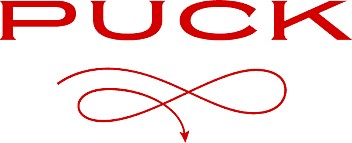
ARTICLE | Gangs of New York | Armory Rundown
September 8, 2024 - Marion Maneker for Puck
Gangs of New York
Art fairs are like political conventions—highly orchestrated events designed to project confidence while nevertheless revealing enough anxiety to remain interesting. This week’s Armory Show in New York, for instance, isn’t a high-stakes venue, and sales aren’t make-or-break for dealers. The draw for the Armory Show, which also includes the offsite Independent 20th Century and Art on Paper fairs, is simply a foothold in Manhattan for galleries that don’t normally have access to the city’s customer base. But there is a sense this year that some on-the-bubble galleries really need to get money in the door or there might be serious consequences.
Throughout the first two days, there were the usual complaints about timing (the end of the summer, beginning of the school year, etcetera), and the long shadow of the U.S. Open. In many ways, the Armory Show is now the gateway to the back half of the art calendar, teeing up all the familiar narratives and questions. Alas, there’s always commentary that the fair should be pushed back a week, as if Frieze, the fair’s new owner, had any choice when negotiating with the Javits Center.
A few moments before the fair opened, new director Kyla McMillan touted the rejiggering of the fair’s floor plan and the latest variation on themes for grouping booths. But none of that matters very much. Of all of the world’s art fairs, the Armory Show is laid out most like a supermarket, with two rectangles connected by a passageway between a V.I.P. lounge and venue for talks, and it’s easy to get disoriented. In the aisles, most of the chatter centered—as it usually does—on the pace of the market. At two different stops, on Thursday and Friday, I ran into some members of the handful of families who actively engross art—they buy and sell a lot of it—and often act as wholesale suppliers for many galleries. So their view of the market is perhaps more fine-tuned.
Notably, they were in good spirits. I mentioned a Joan Mitchell work on paper I’d seen at a nearby booth, which prompted conversation about how one of their families had done good business this year in Mitchell works on paper. The comment was further evidence that, below the surface, there is an active art market, even if the auction numbers have come down significantly. Though one person mentioned that margins remain slim and buyers remain disciplined and tough in their counteroffers.
Reported transactions included Victoria Miro gallery’s sale of a new Yayoi Kusama painting priced at $800,000, while Kasmin sold a Robert Motherwell painting, Apse, for $825,000, and a Walton Ford painting, The Singer Tract, for $750,000. Berry Campbell Gallery, which has made its name representing mid-century female abstract painters, sold a Lynne Drexler painting from the late ’70s, Autumn Twilight, for $450,000, and one from Yvonne Thomas for $125,000. Buchmann Galerie sold a Tony Cragg sculpture for a price above $150,000, and a Clare Woods painting for somewhere around $80,000. (As always, some of these deals may have been wholly or partially negotiated in advance of the fair—a common practice that allows sellers to help shape the narrative of the market’s momentum.)
Sean Kelly sold paintings by Sam Moyer, Ilse D’Hollander, and several Hugo McCloud works for prices in the mid- to high five figures. Tang Contemporary says they sold an Ai Weiwei bronze casting for $450,000. 303 Gallery sold Doug Aitken lightboxes and two Robert Pruitt works for prices in the low- to mid-six figures, along with cheaper works by Alicja Kwade and Jeppe Hein. Michael Kohn Gallery sold two Lita Albuquerque paintings for high five-figure prices. Templon sold Chiharu Shiota works for low six-figure prices. Pippy Houldsworth Gallery sold works by Angela Heisch and Zoë Buckman for solid five-figure prices.
There were many more sales reported by the fair—too many to include them all here. This recitation should remind us that many of these sales could have taken place at any time in the last few seasons. For example, Vigo Gallery reported selling three Jordy Kerwick paintings each priced at $8,500. That seems like a comedown from peak Kerwick-mania in 2022. And, no doubt, one could easily use that as evidence of a Chicken Little art market. But the fact that Kerwicks are selling at all is far more important than whether his prices have pulled back.
Back to News
